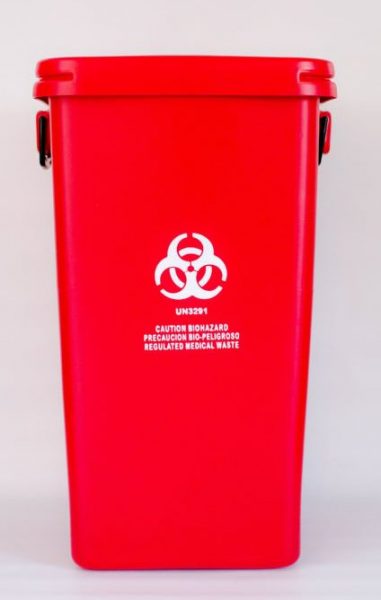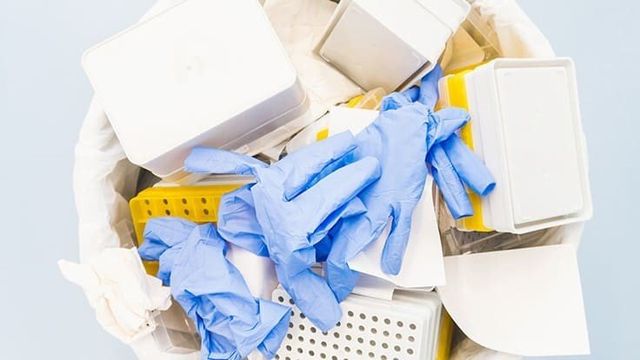Remain Ahead of Rules: Expert Guidance on Medical Waste Disposal
In a globe where the medical care industry is continuously progressing, it is important for medical facilities to remain in advance of laws when it comes to the appropriate disposal of clinical waste. With rigorous standards and constant regulatory changes, it can be challenging to navigate the complexities of this process. With expert guidance, facilities can ensure compliance and minimize threats linked with inappropriate waste disposal. From recognizing the various classifications of medical waste to executing the best collection and segregation methods, this discussion will certainly give beneficial understandings and actionable suggestions to help centers remain ahead of regulations in the ever-changing landscape of clinical garbage disposal.
Recognizing Medical Waste Categories
Understanding medical waste categories is crucial for correct disposal and management in healthcare centers. Clinical waste describes any type of waste produced by healthcare activities that may position a risk to public health and wellness or the setting. It is vital to classify clinical waste properly to guarantee its risk-free handling, disposal, transportation, and therapy.
There are several categories of clinical waste that health care facilities require to be aware of. The most typical categories consist of transmittable waste, pathological waste, sharps waste, pharmaceutical waste, and chemical waste. Each group has specific guidelines and policies for its appropriate management and disposal.
Pathological waste refers to human cells, body organs, or body components that need special handling and disposal. Pharmaceutical waste comprises expired, extra, or infected medications that need cautious handling and disposal.
Staying Up-To-Date With Regulatory Changes
Remaining existing with regulative modifications is critical for medical care facilities to make sure compliance and proper monitoring of clinical waste disposal. medical waste removal. With laws frequently progressing, it is vital for healthcare centers to remain updated to stay clear of charges, fines, and possible damage to the environment and public wellness
To remain ahead of governing modifications, healthcare centers ought to develop a system for tracking and monitoring updates. This can be done by signing up for regulatory e-newsletters, going to conferences and workshops, and actively joining industry organizations. Additionally, centers should mark a team member or team liable for remaining educated and distributing details to appropriate stakeholders.
Normal communication with governing agencies is likewise important. Health care centers ought to develop relationships with regional, state, and government agencies to ensure they understand any changes in regulations that might influence their waste management methods. This can be done via regular meetings, engagement in public remark periods, and positive involvement with governing agencies.
Moreover, healthcare centers ought to take into consideration partnering with waste management firms that focus on clinical waste disposal (medical waste disposal services with WasteX). These firms are frequently skilled in the most recent regulations and can offer assistance and assistance to make sure conformity
Applying Proper Collection and Segregation Methods
To efficiently handle medical garbage disposal, health care centers have to establish appropriate collection and partition techniques in conformity with regulative standards. Carrying out these techniques makes sure the risk-free handling and disposal of possibly dangerous materials, safeguards the environment, and reduces the risk of infections and injuries to healthcare workers and the basic public.
Correct collection and partition techniques include making use of designated containers and labeling systems. Medical care centers ought to offer clearly identified containers for different types of medical waste, such as sharps, transmittable waste, pharmaceutical waste, and non-hazardous waste. These containers need to be color-coded and plainly marked to avoid complication and advertise simple identification.
Additionally, medical care centers ought to educate their team on the right procedures for accumulating and setting apart medical waste. This consists of informing them on the different sorts of waste, the suitable containers to use, and the relevance of adhering to guidelines and regulations. Normal training sessions and refresher training courses need to be conducted to ensure that personnel stay up-to-date on finest practices.
In addition, health care centers must establish a system for routine collection and disposal of clinical waste. This may entail partnering with certified waste monitoring business that concentrate on medical garbage disposal. These companies will make certain that the gathered waste is transferred and taken care of in compliance with governing requirements.
Selecting the Right Disposal Approaches

Incineration is just one of the most efficient and usual approaches for dealing with specific sorts of clinical waste, such as pathological waste and sharps. It includes the controlled combustion of waste at heats, minimizing it to ash. Incineration can launch dangerous toxins right into the air and contribute to air pollution.

Chemical treatment includes the usage of chemicals to counteract the waste and sanitize. Microwave treatment utilizes microwave energy to warm and sanitize the waste.
Making Certain Conformity Via Documents and Training
After meticulously considering the appropriate disposal methods for medical waste, medical care facilities should make sure conformity with guidelines and lessen environmental effect by executing efficient documentation and training procedures. This step is crucial in maintaining a lasting and risk-free environment for both healthcare employees and the public.

Training is equally vital in guaranteeing conformity with regulations. Health care employees that handle medical waste must obtain appropriate training on waste segregation, managing, and disposal treatments. This training should cover topics such as the proper use individual safety tools, recognition of different sorts of waste, and the appropriate disposal techniques for every waste group. By giving comprehensive training, healthcare facilities can equip their personnel to make educated decisions and lessen the threat of inappropriate garbage disposal.
Conclusion
To conclude, remaining in advance of regulations in medical garbage disposal is crucial for medical care centers. medical waste removal near me. Recognizing the various classifications of medical waste, remaining updated with regulatory changes, applying appropriate collection and segregation methods, picking the proper disposal methods, and ensuring conformity through documents and training are all necessary steps. By following these standards, health care organizations can successfully get rid of and manage of clinical waste in a risk-free and liable way
From understanding the various classifications of clinical waste to executing the right collection and partition methods, site link this discussion will medical waste disposal services with WasteX certainly offer valuable understandings and workable ideas to aid facilities remain in advance of regulations in the ever-changing landscape of clinical waste disposal. - medical waste disposal services with WasteX
The most typical categories consist of transmittable waste, pathological waste, sharps waste, pharmaceutical waste, and chemical waste. Medical care centers should offer clearly identified containers for various kinds of clinical waste, such as sharps, transmittable waste, pharmaceutical waste, and non-hazardous waste. Medical care centers need to develop a comprehensive system to tape-record and track all aspects of medical waste disposal, including types of waste generated, quantities, and disposal methods used. Healthcare workers that take care of clinical waste needs to obtain ideal training on waste partition, taking care of, and disposal treatments.